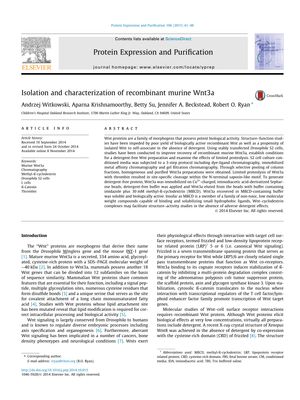Isolation and Characterization of Recombinant Murine Wnt3a
November 2014
in “
Protein Expression and Purification
”

TLDR Scientists successfully purified a protein called Wnt3a, which is involved in processes like hair growth, but the overall yield was low, suggesting more work is needed to improve this.
In 2015, researchers conducted a study to improve the recovery of recombinant murine Wnt3a, a protein involved in biological processes including hair growth. They used a 3-step protocol involving various chromatography techniques and successfully obtained purified Wnt3a preparations. The study found that Wnt3a was present in fractions across the entire profile, but the main protein peak was discarded due to heavy contamination with other proteins. The final product obtained was >85% homogenous and had higher specific activity. The use of CHAPS detergent was necessary to maintain the solubility and prevent aggregation of Wnt3a, but the yield remained low. An alternative approach using MBCD improved Wnt3a solubility and activity. However, the overall yield was suboptimal, indicating the need for further studies with alternate forms of cyclodextrin.

